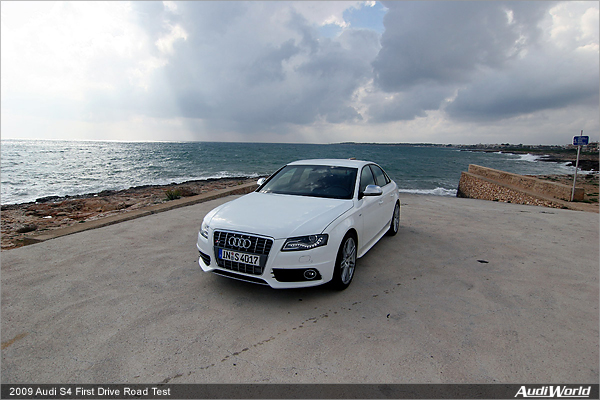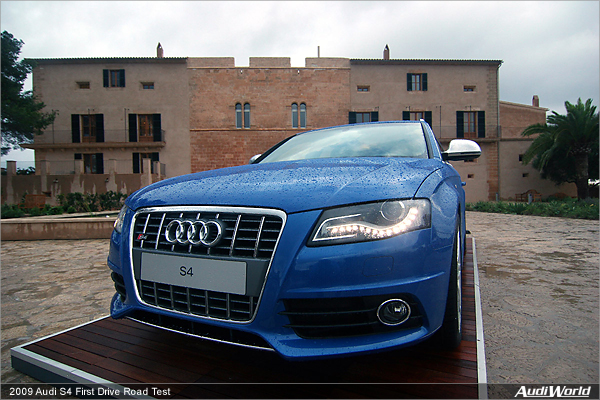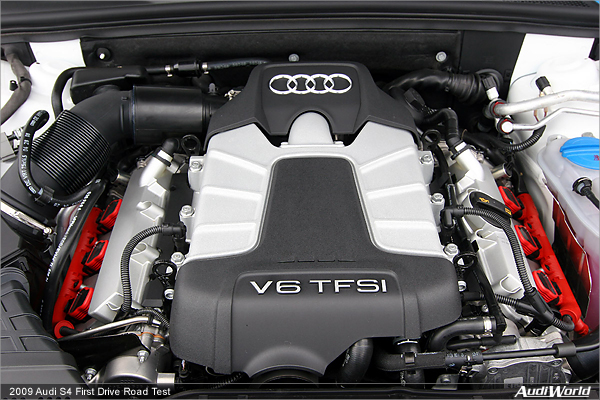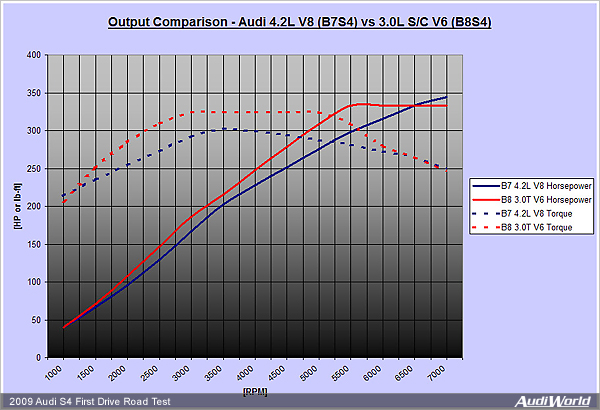2009 Audi S4 First Drive: Pray for Rain

For those of you with short attention spans, we’ll cut right to the bottom line. The new B8 S4 is better than the old one. The supercharged V6 is better than the V8. The new car is lighter, faster, more fuel efficient, more rewarding to drive and cheaper to boot. The optional rear sport differential rocks – no question. The B8 S4 may be more fun than any other Audi (save for the R8) in the rain. There’s no Avant for the US, and that’s probably not going to change. Yes, we asked twice. Do we have your attention? Would you like to know more? Perhaps you’re skeptical of these bold claims. In any case, keep reading as there’s a lot more to the story…
Our experience with the new S4 begins in Majorca, an island in the Mediterranean Sea nestled about halfway between Spain and Africa. With its mild climate, beautiful beaches, and picturesque mountains, Majorca is one of the premiere tourist destinations for many Europeans. Most travelers coming to the island expect clear sunny skies, and anything less could easily be interpreted as the makings of a disappointing vacation. Sun and sand may have been what Audi visualized when planning the launch of their mid-sized sport sedan, the B8 S4, on this Spanish island. Other visitors were undoubtedly irritated after being ambushed by bouts of heavy rainfall. For those of us behind the wheel of the new S4 equipped with a torque vectoring sport rear differential, the rain couldn’t have been more welcome.
The B8 platform is the basis of Audi’s latest A4, their best selling vehicle. Audi calls the all-new underpinnings a Modular Longitudinal Platform or MLP for short. The brand is banking on a “modular” system, meaning they will be able to share the same basic architecture throughout their model lines (currently A5/S5 with plans for A6/A8) to save on development, tooling and production costs. Perhaps the most notable feature of this platform is the new packaging proportions which are a departure from traditional Audi layout.
The wheelbases of the respective vehicle lines have been lengthened, resulting in less front overhang. Through some creative engineering, Audi has changed the relative locations of the front differential, clutch, and steering rack assemblies in order to push the engine back over 6 inches compared to previous A4/S4 offerings. The resultant effect is a more balanced weight distribution and a reduced polar moment of inertia; the car will be more willing to rotate and eagerly respond to the driver’s steering inputs.
After a well received launch of the mainstream A4, Audi’s muscular and more exclusive S4 is waiting in the wings to be sent to North American shores late 2009 as a 2010 model. Unlike the transition from the B6 to B7 S4 variants (which was largely cosmetic changes), the B8 takes the concept of a mid sized all-weather sports sedan in an entirely new direction. The revised MLP platform has improved weight distribution to 55F-45R. Instead of the previous 4.2 liter 344 hp V8, the B8 S4 is propelled by a 333 hp FSI 3.0 liter V6 with an Eaton 4-vane Roots belt driven supercharger nestled cozily between the 90-degree cylinder banks. Audi has oddly dubbed this engine as a 3.0T (“T” has typically stood for exhaust driven turbocharging in Audi’s nomenclature) despite forcefully engulfing air with a “Kompressor”.
Yes, you read that correctly. The new and supposedly “improved” B8 S4 is down 11 thoroughbred Deutsche Pferde right out of the gate when compared to the outgoing V8 model.
“What’s the point of that?” you may ask.
Hold on, pause a second, it all makes perfect sense. Long story short, this IS a stronger engine despite the slightly misleading peak output figures. Aside from the last 500 RPM of the useable rev range, the V6 engine is making more power basically everywhere. The supercharged V6 has a flat torque plateau of 325 lb-ft starting at 2,900 and carrying out to 5,300 RPM. Looking at the two output curves overlaid below, one can easily see that the V6 engine is creating more horsepower and more torque at nearly every RPM point compared to the normally aspirated 4.2 liter V8. The end effect is a more responsive engine. Area under the power curve is the secret here.
A broader torque curve is not the only motivation for the smaller force-fed engine. With increasing emphasis on global greenhouse emissions and reducing fuel consumption, all major automakers have been working on engine downsizing. The concept of downsizing is simple: use a lower displacement engine with forced induction to generate the power of a large engine and the fuel consumption of a smaller one. Besides an absolute improvement in efficiency, the yearly taxation benefit in many countries outside of the US (which tax vehicles according to engine size) can equate to hundreds of dollars or more.
Audi is one of the pioneers of this downsizing design strategy as seen in the original 1.8T. Modern technologies like direct gasoline injection and advancements in turbocharging have made this design strategy even more potent. With the 4.2 liter V8 notorious for being a gas guzzler, the decision to “re-downsize” the S4 platform was clear for Audi engineers. According to Audi, the B8 S4 uses 27% (!) less fuel than the V8 powered B7. More performance and drastically lower fuel consumption? Sounds like a winner.
Was this the correct decision? Has Audi abandoned the turbocharger, which has done them so well in the past? According to Audi, a biturbo direct injection version of this engine was developed in parallel. After a long testing and development process, a decisive nod was given to the mechanically supercharged version. The advantages of the mechanical supercharger are plentiful – easier to package, quicker throttle response and boost buildup and overall simplicity.
At the modest power levels and boost pressure targeted by the S4 development team (0.8 bar manifold), the supercharger concept yielded the best overall package, with emphasis on drivability and throttle response. Audi will admit that on higher powered applications (say 400+ hp), the turbocharging solution will be superior. The 580 hp 5.0 liter V10 from the RS6 and the upcoming 4.0 biturbo V8 is proof that Audi hasn’t abandoned turbochargers.
|



